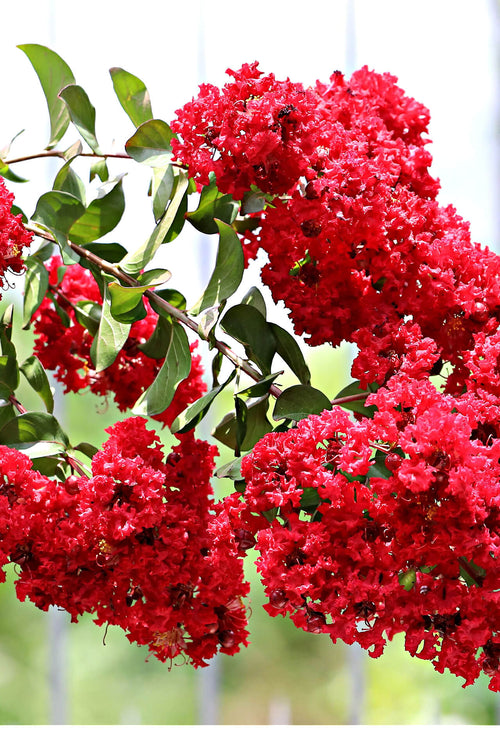Beginner's Guide to Growing Crepe Myrtle: Tips from TN Nursery
Crepe Myrtle (Lagerstroemia indica) is a versatile and beautiful flowering tree that adds charm and color to gardens, landscapes, and urban spaces. Known for its vibrant blooms, smooth bark, and easy maintenance, Crepe Myrtle is a favorite among gardeners of all levels. In this beginner's guide, brought to you by T.N. Nursery, we will explore the essential steps and tips for successfully growing and caring for Crepe Myrtle trees.
Choosing the Right Location
Selecting the right location for your Crepe Myrtle is crucial for its growth and overall health. These trees thrive in full sun, requiring at least six to eight hours of direct sunlight daily. Ensure the chosen spot has well-draining soil, as Crepe Myrtles do not tolerate standing water. They can adapt to various soil types, including sandy or loamy soils, but they prefer slightly acidic to neutral pH levels.
Planting Crepe Myrtle
Planting Crepe Myrtle involves a few straightforward steps to ensure its successful establishment:
Digging the Hole: Dig a hole twice the width of the root ball and just as deep. This will provide ample space for the roots to spread out.
Positioning the Tree: Gently remove the tree from its container and place it in the center of the hole. The top of the root ball should be level with the surrounding soil.
Backfilling: Fill the hole with soil and gently tamp it down to eliminate air pockets. Water the tree thoroughly to help settle the soil around the roots.
Watering
Proper watering is essential during the establishment phase and beyond. For the first few months after planting, water the Crepe Myrtle profoundly and consistently to encourage root growth. Once established, they are relatively drought-tolerant but will still benefit from regular watering, especially during hot and dry periods. A layer of mulch around the tree's base can help retain moisture and regulate soil temperature.
Pruning season
Pruning Crepe Myrtle is controversial, as improper pruning can lead to unsightly growth habits known as "Crepe Murder." To avoid this, follow these guidelines:
Selective Pruning: Prune only to remove dead or diseased branches and any suckers that emerge from the tree's base.
Crown Thinning: If necessary, thin out the branches to improve air circulation and light penetration. This should be done during the dormant season, typically in late winter or early spring.
Avoid Drastic Cuts: Avoid harshly cutting back the main branches, as this can lead to the regrowth of weak and unsightly shoots.
Fertilizing
Crepe Myrtles generally do not require excessive fertilization. A balanced, slow-release fertilizer in early spring can help promote healthy growth and abundant blooms. Be careful not to over-fertilize, as this can lead to excessive foliage growth at the expense of flowers.
Pest and Disease Management
Crepe Myrtles are relatively resilient and less susceptible to pests and diseases. However, they can still be affected by issues such as aphids, powdery mildew, and scale insects. Regularly inspect your trees for any signs of pests or diseases and take appropriate action if necessary. A strong blast of water or horticultural oils can help control minor infestations.
Winter Care
In colder climates, Crepe Myrtles may require some winter protection. Apply a layer of mulch around the tree's base to insulate the roots and protect them from freezing temperatures. Wrapping the tree in burlap or using protective covers can shield the branches from harsh winter winds.
Conclusion
Growing Crepe Myrtle can be rewarding, especially with the proper knowledge and guidance. This beginner's guide from T.N. Nursery has covered the essential steps to help you successfully cultivate these beautiful flowering trees. Remember to choose a suitable location, provide proper care through watering, pruning, and fertilizing, and be vigilant against potential pests and diseases. With attention and care, your Crepe Myrtle can thrive and bring beauty to your outdoor space for years.



















































